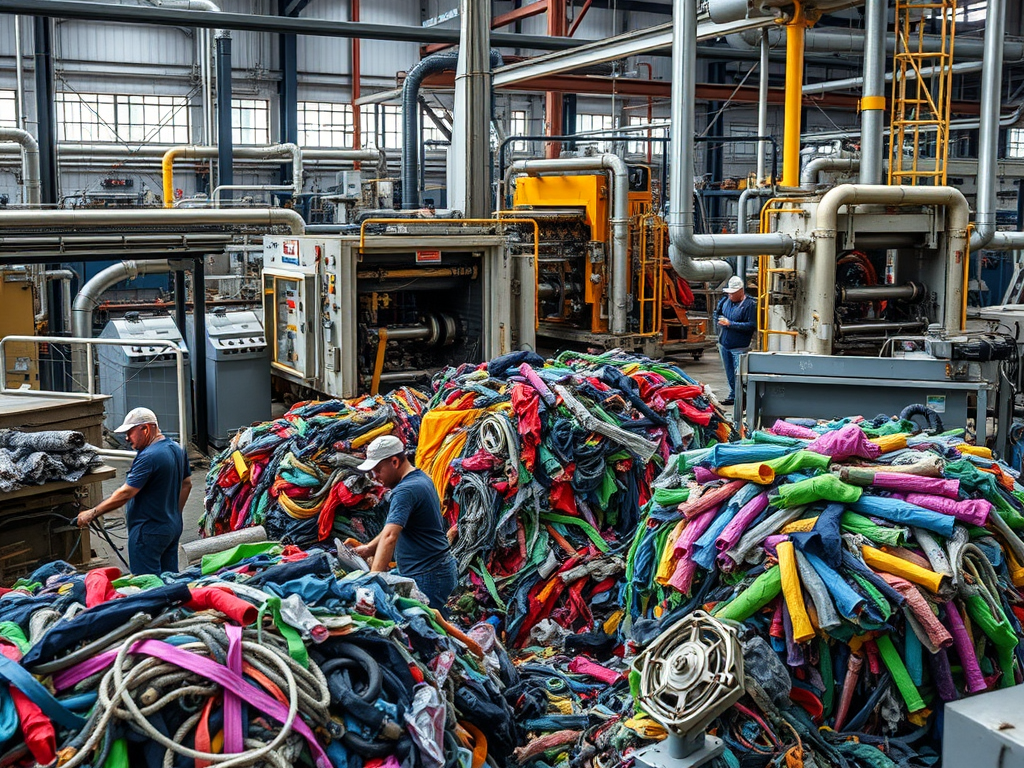Nylon, a ubiquitous material, is woven into the very fabric of our daily lives, appearing in everything from high-performance apparel to household items. Yet, as environmental awareness rises, so does scrutiny of the substances we choose to incorporate into our lives. While nylon offers undeniable benefits, such as durability and versatility, questions about its eco-friendliness persist. This article delves into the environmental implications of nylon, dissecting its production, usage, and disposal impacts. By exploring the complexities of this synthetic fiber, we aim to uncover the truth behind its sustainability credentials.
What Is Nylon?

Nylon is a type of synthetic polymer classified as a nylon thermoplastic. Initially developed in the 1930s by DuPont, it was prized for its strength and elasticity. Its unique structure—a series of long chains of polyamide molecules—endows it with a range of properties that make it suitable for numerous applications. Commonly found in textiles, nylon has been a popular choice in fashion for items like stockings and jackets, while a growing array of industries leverages its capabilities. Furthermore, it is often used in construction materials, automotive parts, and even some types of food packaging. The versatility and performance of nylon have undeniably made it a staple material in the modern world.
The Production Process of Nylon

The manufacturing process of nylon is complex and energy-intensive. It typically involves the polymerization of hexamethylenediamine and adipic acid, producing a consensus material known as nylon 6,6. This step is followed by a spinning procedure that transforms the molten polymer into fibers suitable for weaving and knitting. Various intermediates and additives can also be incorporated to enhance properties, such as strength and elasticity. While this permits the customization of materials tailored for specific applications, it raises pressing concerns regarding resource consumption and pollution. Indeed, chemical processes in nylon production can lead to significant environmental implications, which we must explore further.
The environmental footprint of nylon production encompasses multiple factors, including greenhouse gas emissions, energy usage, and water consumption. Processes commonly emit chemicals that contribute to water pollution. Besides, energy-intensive practices contribute to CO2 emissions, fundamentally impacting climate change. The following list highlights specific environmental issues associated with nylon production:
- High carbon footprint during manufacturing.
- Pollutants released into water systems.
- Excessive use of natural resources, such as fossil fuels and water.
The Lifecycle of Nylon
From production to disposal, the lifecycle of nylon spans various stages, each presenting unique environmental challenges. Upon leaving the factory, nylon products enter the consumer market, where they may undergo extensive use before being discarded. Typically, nylon garments are designed to last, but their eventual fate in landfills raises environmental concerns. Unlike natural fibers that may decompose more quickly, nylon can persist in landfills for decades, releasing toxins over time. In this context, understanding the lifecycle can help consumers make informed choices about their purchases and post-consumer actions. It is essential to evaluate how this impacts not just local but global ecosystems.
| Lifecycle Stage | Environmental Impact |
|---|---|
| Production | High carbon emissions, water usage, and pollution. |
| Usage | Durability leading to long-lasting products; potential for microplastic release. |
| Disposal | Slow decomposition, with risks of landfill leakage. |
Recycling and Disposal of Nylon
While recycling nylon presents a potential solution to its environmental concerns, challenges abound. Generally, consumers face limited access to effective recycling programs, and confusion regarding proper disposal methods remains widespread. Despite these barriers, several initiatives have emerged to improve nylon’s lifecycle. This includes companies that have pioneered recycling technologies capable of extracting usable materials from discarded nylon products. Collectively, these programs aim to not only reduce waste but also create a more sustainable model for nylon use. It is imperative for consumers to be proactive in utilizing recycling facilities that adequately address nylon waste.
Recent advancements in recycling technologies have opened new avenues for nylon recovery. The following list outlines some of the notable innovations:
- Closed-loop recycling systems that repurpose old nylon into new products.
- Mechanical recycling processes that shred nylon waste for reuse.
- Chemical recycling techniques that break down nylon into its raw materials.
Biodegradability of Nylon
One of the most significant criticisms of nylon is its low biodegradability. Unlike natural fibers, nylon can take upwards of 30 to 40 years to break down in a landfill environment. This poses a critical concern for waste management practices and the long-term health of ecosystems. Evaluating nylon within the context of other materials highlights its deficiencies. For example, natural materials tend to decompose more rapidly, thereby lessening their environmental impact. Ultimately, assessing biodegradability is central to understanding which materials contribute to or alleviate ecological burden.
Innovations in Eco-friendly Nylon
In recent years, significant strides have been made in developing more sustainable nylon alternatives. These innovations focus on reducing environmental impact by utilizing bio-based feedstock and fostering closed-loop systems in production. The journey toward eco-friendly nylon is not merely about replacing materials but also involves rethinking entire supply chains. Some notable developments include:
- Bio-based nylon produced from renewable sources, such as castor oil.
- Recycled nylon sourced from post-consumer waste like fishing nets.
- Improved manufacturing practices that minimize waste and energy consumption.
Conclusion
In examining the nuanced relationship between nylon and its environmental impact, it becomes clear that while the material offers various benefits, significant sustainability challenges exist. The manufacturing process contributes to pollution and resource depletion, while its lifecycle raises pressing concerns regarding waste. Emerging recycling technologies and eco-friendly alternatives offer paths toward improved outcomes, yet the need for consumer awareness remains paramount. Efforts to offset nylon’s effects must be driven by both industry innovation and informed consumer choices. Ultimately, it is imperative to weigh nylon’s practical uses against its environmental implications.
Frequently Asked Questions
- Is nylon biodegradable? Nylon is not biodegradable in a traditional sense and can take several decades to break down in landfills.
- What are eco-friendly alternatives to nylon? Natural fibers like organic cotton, hemp, or recycled polyester are considered more sustainable options.
- Is there such a thing as recycled nylon? Yes, recycled nylon exists and can significantly reduce the environmental impact by reusing materials from disposed nylon products.
- How can I recycle nylon products? Many local recycling programs and initiatives specifically handle nylon, including garment take-back programs that can help ensure proper disposal.
- Does nylon production contribute to greenhouse gas emissions? Yes, the production of nylon is energy-intensive and contributes to greenhouse gas emissions, particularly during the manufacturing process.
